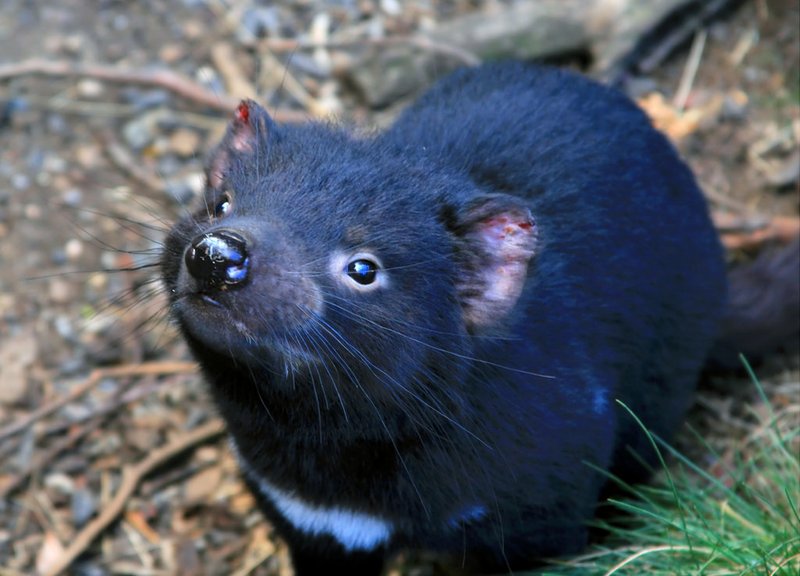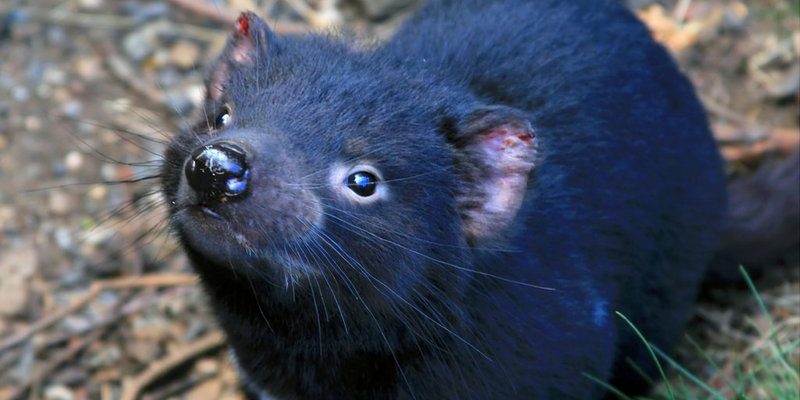
Tasmanian devils aren’t your everyday mammals. They’re like nature’s tough guys wrapped in a fur coat, known for their rambunctious behavior and distinctive growls. But behind that fierce exterior lies a nurturing side, especially when it comes to their offspring. In this article, we’ll dive into the details of how these devils rear their young, exploring their habitat, life cycle, and even the challenges they face in the wild. So, grab your coffee, and let’s get into the unique world of Tasmanian devil parenting!
The Habitat of Tasmanian Devils
To understand how Tasmanian devils raise their young, we first need to know where they call home. These little creatures primarily inhabit Tasmania, an island state of Australia. Their preferred habitats include forests, woodlands, and grasslands. This diverse landscape provides a rich environment filled with food sources and hiding spots, perfect for both adult devils and their young.
Devils are nocturnal animals, meaning they are most active during the night. By venturing out under the cover of darkness, they can avoid many predators while hunting. The Tasmanian landscape offers them plenty of opportunities for exploration, which is crucial when raising their young. It’s like having a playground filled with crunchy snacks and safe spots to hide!
Adaptations to the Environment
Tasmanian devils have several adaptations that help them thrive in their habitat. Their keen sense of smell plays a significant role in finding food, which includes carrion, small mammals, and insects. This skill is especially important when they’re feeding themselves as well as their young.
Moreover, their tough skin and strong jaws enable them to scavenge leftovers and take on prey much larger than themselves. The combination of these adaptations not only supports the adult devils, but they also ensure that the young have access to adequate nutrition as they grow. It’s a survival of the fittest, but with a distinctive twist: the parents are fiercely protective of their offspring!
The Reproductive Process
Now, let’s delve into how Tasmanian devils mate and reproduce. The mating season typically occurs from February to May. The female devil, after a courtship ritual that can be quite vigorous, will give birth to a litter of usually 2 to 4 tiny, underdeveloped babies about three weeks after mating.
Here’s where it gets interesting: these little ones are born the size of a pea! They’re incredibly vulnerable and must crawl into their mother’s pouch immediately after birth. Once they’re in the pouch, they latch onto a teat, staying there for several weeks as they continue to develop. It’s like an exclusive VIP lounge for the tiniest devils!
The Importance of the Pouch
The pouch serves as a protective space for the young. Inside, they can nurse safely while continuing to grow. For about two to three months, the young devils remain in this snug pouch, completely dependent on their mother. When they finally start to venture out, they’re still not fully independent. They rely on their mother’s guidance to learn the ropes of surviving in the wild.
The pouch life can be likened to a cozy, safe cocoon, allowing the young devils to grow strong enough for their first taste of the outside world while staying nourished. It’s a crucial stage that sets the foundation for their survival skills later on.
Feeding and Care
Once the young devils start to leave the pouch, their mother begins to teach them essential survival skills. Feeding is a big part of this process. The mother will take them to a food source, teaching them how to scavenge and hunt.
The Tasmanian devil’s diet often includes carrion, which means they rely heavily on the remains of dead animals. Their mother needs to hunt for food, and she’ll often bring back meals for her young ones. This is where the skills learned in the pouch come into play—those early lessons are crucial for when they start to fend for themselves.
Teaching Survival Skills
As the young devils grow, their mother encourages them to practice their hunting techniques. This might look like her dragging a food source while they follow behind, practicing their bites and skirmishes. It’s like a master class in devil survival!
Once the young devils reach around four months old, they gradually start to rely on solid food as they shift away from nursing. This transition marks a critical point in their development, as they start to incorporate the skills learned from their mother into their own hunting and feeding habits.
Independence and Leaving the Nest
Around six months old, the young devils are ready to step out on their own. This is a pivotal time when they start to leave their mother’s side to explore and establish their own territories. It’s the moment every parent dreads—the bittersweet feeling of watching their children grow up and venture into the world!
Leaving the nest doesn’t mean they’re fully prepared for adult life, though. They often stay within their mother’s vicinity for a while, honing their skills and figuring out how to navigate their surroundings without her guidance. It’s like the first day of school for them—exciting yet daunting!
Challenges of Growing Up
Growing up in the wild comes with its share of challenges. Young devils must learn to avoid predators, find food, and compete with other wildlife. Their mother’s teachings play a massive role in this, but there’s no substitute for real-life experience. Here’s the thing: the world outside is unpredictable and often dangerous.
Despite these challenges, the resilience of Tasmanian devils shines through. Those who survive their early years emerge as strong, independent adults ready to start the cycle over again. It’s a tough journey, but one that’s crucial for the continuation of their species.
Conservation and Challenges
While Tasmanian devils are incredibly resilient, they also face significant challenges in the wild today. One of the biggest threats is Devil Facial Tumor Disease (DFTD), a contagious cancer that has decimated devils in many areas. This disease primarily affects adults, and its impact on the population has substantial implications for young devils.
Additionally, habitat loss due to human activities poses a serious threat. As forests are cleared for agriculture and urban development, young devils have fewer places to grow and learn. Conservation efforts are crucial to help these animals thrive despite the odds stacked against them.
Conservation Efforts
There are ongoing efforts to protect Tasmanian devils and ensure their survival. Conservationists are working to create safe zones where these creatures can flourish. They’re also studying DFTD to find potential solutions and hope to reintroduce healthy populations back into the wild.
Ultimately, supporting these efforts means ensuring a future for Tasmanian devils and the continuation of their unique parenting practices. It’s a reminder that every effort counts in the fight to protect wildlife.
Raising young in the wild is a tough job, but Tasmanian devils tackle it with a combination of fierce determination and nurturing care. From their unique pouch system to the skills they teach their young, the parenting style of these little creatures is nothing short of remarkable.
As we learn about their world and the challenges they face, it’s essential to acknowledge our role in protecting their habitats. By supporting conservation efforts, we can help secure a brighter future for Tasmanian devils and their adorable, albeit tough, little offspring. So next time you marvel at these unique marsupials, remember the incredible journey they go through to raise their young in the wild!

